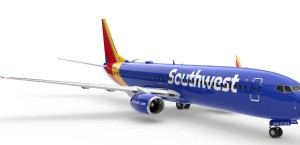
Last week we looked at improvement vs. growth.
A quick recap is that I think the terms are pretty close to interchangeable.
Growth has been the term used for a long time in the business world, but lately I think it’s being taken out of context and leading to some issues.
I like using the term improvement now as a way to encourage everyone in an organization to improvement in all ways including for themselves and for the organization as a whole.
For example, a person may take an online course to improve their skills. That would be good for the individual and for the business.
The person could also spot an inefficiency in a process and make a suggestion to their manager or team member to improve the business. The improvement might also improve the lives of those working on the process, relieving stress and making their job easier and opening up other opportunities.
I guess that recap got a little longer than I thought.
Today we’re expanding on the idea and talking about improvement within a framework.
Improvement Within A Framework
Some of my favorite books are the ones by Jim Collins including Good To Great and Great By Choice. I pulled a lot of lessons from those books and one that continually comes to my mind is the idea of a framework.
The example that stands out in my memory all the time is Southwest Airlines.
It’s mentioned here in this article.
The best part is the section on Southwest’s Radical Restraint.
This is my favorite quote:
In 1996 more than 100 cities clamored for Southwest service. And how many cities did Southwest open that year? Four.
I don’t know why, but I think of that quote all the time.
Southwest demands profit every year and one way they do that is by taking a calculated look at growth. They seem to refer to it as growth, but in our case we’re looking at it as improvement.
For any business there will be opportunities. The trick to improvement within a framework is to place restraints on the improvement you take.
For example, with Southwest there were plenty of opportunities to increase the number of cities. But they had the restraint to only expand to the ones that presented the best opportunity and the ones that Southwest felt it could reasonably handle. They didn’t want to take on unnecessary risk by expanding into a city and finding out that there were unexpected costs leading to taking that city away in the future.
There were also times when Southwest could expand by using a variety of aircraft. Many airlines have expanded their fleet size by getting the best deals on any planes available. Southwest, however, understood that they could only improve in the long-term if they kept their fleet to one type of plane. This allowed for more efficient piloting, maintenance and everything. Even today it looks like they still only have 737s in their fleet.
All organizations can benefit from improvement within a framework.
For Southwest, they had a framework in place. One example was that they could certainly expand the cities they service, but only if those new cities fit specific requirements. The same was true for growing the fleet. It could happen only if a certain plane was available to purchase.
For your organization, you’ll have to find the framework that allows for improvement, but only the type of improvement that is beneficial in the long-term.
A Long-Term Focus
The overarching theme of these last two posts on improvement is that focusing on the long-term is the best for everybody involved with an organization.
There has been a lot of fanfare over recent years about the fasting growing companies. There has been a focus on how fast companies can grow and it’s great while the growth is happening, but many of these companies are at risk because they don’t have a framework in place.
Southwest is today one of the largest airlines in the world. That didn’t happen overnight. Many airlines grew much faster at various points in time only to suffer deaths in various ways.
All the while Southwest took on the tortoise approach while allowing others to seek fast growth like the hare in the race. But over time it actually was Southwest that was able to see big jumps in profitability, but only after figuring out its framework for improvement.
It’s difficult to turn down opportunities for improvement. Things can even look really good with an opportunity especially with the money, but it’s important to really scrutinize every opportunity and look at it from a long-term perspective.
If something meets all your criteria should you move forward and there might still be bumps, but it should serve you well for the long run.
And those opportunities you do take can still be big opportunities. You don’t have to avoid big opportunities. But evaluate any opportunity, big or small, as it relates to your framework before acting.
